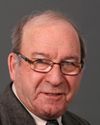Thank you. I'm a little clearer on that.
On page 2, in the second last paragraph, you say that it's difficult to increase the rate of TLE implementation tenfold and then try to maintain that level. I think we all understand that the initial phase would probably be more easily achieved and that it may drop off.
Then you go on to say, “...processing times are decreasing through better planning and various other measures”. You then go on to say that further improvements can be made.
I think it's in the interests of all Canadians and all first nations people that the more quickly we expedite these, the better it will be in terms of economic development opportunities. This point has been referred to a number of times. Could you give me two or three examples of decreasing times through the various other measures? What various other measures have been implemented? Second, what are some of the ones you've already identified moving forward as improvements to the system and the process?




